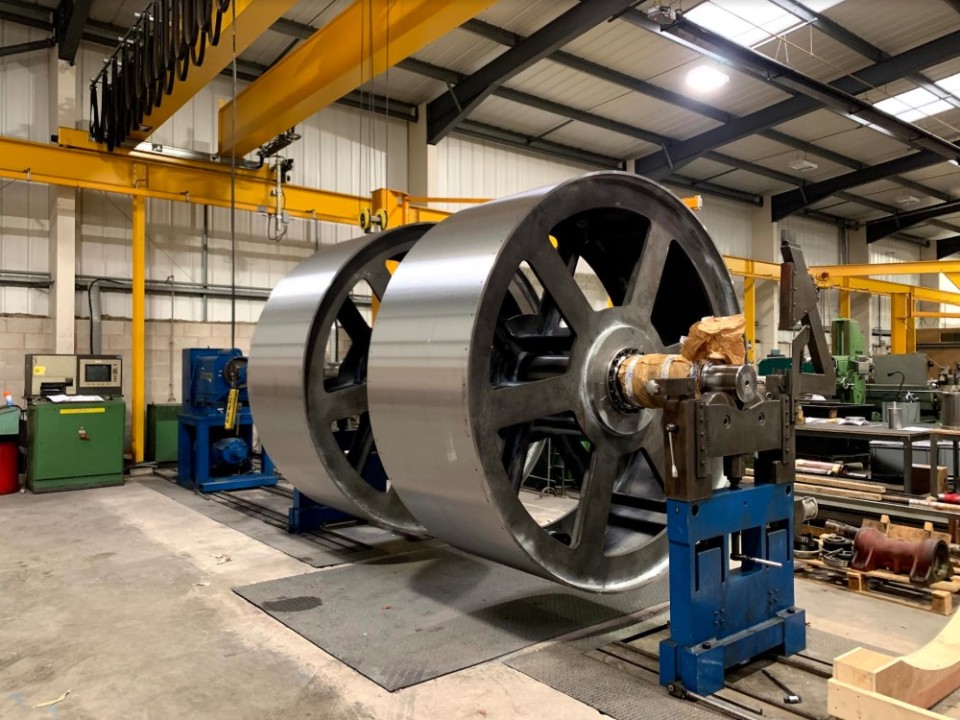Most Popular
The success of any aerospace mission hinges on meticulous attention to detail. Aircraft, spacecraft, and their critical components must operate with unwavering precision and reliability. But a silent threat can jeopardize these delicate systems: imbalance in rotating parts.
In-situ dynamic balancing emerges as a vital tool in the aerospace industry's arsenal, safeguarding the smooth operation of aircraft and ensuring the success of missions.
Turbulence Within: The Peril of Imbalance
Many rotating components within aerospace vehicles, from jet engine rotors to helicopter blades, are susceptible to imbalance. Even minor weight discrepancies can create significant issues.
- Catastrophic Failure: Excessive vibrations caused by imbalance can lead to component failure, potentially compromising the entire mission and endangering lives.
- Reduced Aircraft Performance: Imbalanced components create drag and inefficiency, reducing fuel efficiency and overall aircraft performance.
- Increased Maintenance Needs: Vibrations accelerate wear and tear on bearings and other components, necessitating more frequent maintenance.
- Noise Pollution: Imbalanced components contribute to unwanted noise, posing environmental concerns and affecting crew comfort.
Taking Control: In-Situ Dynamic Balancing for a Smooth Ride
In-situ dynamic balancing offers a proactive approach to combating imbalance and ensuring the smooth operation of aerospace vehicles. Here's how it safeguards flight.
- Minimized Disruption: Balancing is performed directly on the aircraft or spacecraft, eliminating the need for disassembly and transportation of critical components.
- Precision Diagnosis: Specialized equipment measures vibrations emanating from the operating component under real-world conditions.
- Advanced Analysis: Sophisticated software analyzes the data to pinpoint the exact location and severity of the imbalance.
- Targeted Correction: Technicians strategically add or remove corrective weights on the imbalanced component to achieve optimal balance.
- Verification of Success: Final vibration measurements confirm a successful balancing procedure.
A Symphony of Benefits for Aerospace
By incorporating in-situ dynamic balancing into your aerospace maintenance program, you can achieve a harmonious and successful outcome.
- Enhanced Safety: Balanced components minimize the risk of catastrophic failures, safeguarding crew and mission success.
- Optimized Performance: Balanced aircraft operate at peak efficiency, maximizing fuel range and payload capacity.
- Reduced Maintenance Costs: Early detection and correction of imbalance prevent costly repairs and replacements.
- Extended Component Lifespan: Minimized stress from vibrations translates into a longer operational life for critical aerospace components.
- Environmental Benefits: Optimized aircraft performance translates into lower fuel consumption and reduced emissions.
Soaring to New Heights
In-situ dynamic balancing empowers aerospace professionals to take control of their fleet's performance. By proactively addressing imbalance and ensuring the smooth operation of aircraft and spacecraft, you can safeguard lives, optimize performance, and ensure the success of every mission. Let in-situ dynamic balancing be the invisible wing that propels your aerospace endeavors to new heights.
Connect with Arrelic Global today to discuss your in-situ dynamic balancing needs!
